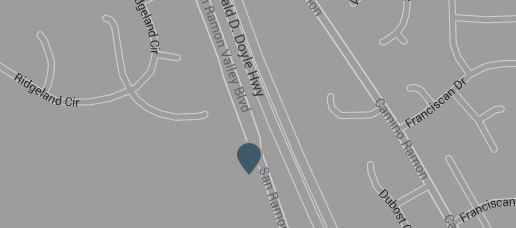Gynecomastia
Consultations offered at our two convenient locations in Danville and Pleasanton
Development of excess breast tissue can be a distressing development for males. Recent estimates have noted that up to 50 percent of males in the United States will experience some level of gynecomastia during their lives.
 Males who develop the condition will often refuse to take their shirts off at the beach or pool, or just avoid these places altogether. Gynecomastia can undermine an individual’s self-confidence and interfere with their quality of life. Fortunately, gynecomastia treatments to sculpt the chest for a natural, masculine appearance solve the issue. Schedule a consultation with Dr. Bachelor to learn more.
Males who develop the condition will often refuse to take their shirts off at the beach or pool, or just avoid these places altogether. Gynecomastia can undermine an individual’s self-confidence and interfere with their quality of life. Fortunately, gynecomastia treatments to sculpt the chest for a natural, masculine appearance solve the issue. Schedule a consultation with Dr. Bachelor to learn more.
Contents
What is Gynecomastia?
 This condition involves enlargement of the male breast tissue and breast tenderness, often caused by an imbalance of estrogen and testosterone hormones. Although it can strike at any time, it often occurs in newborns, boys who are going through puberty, and older men.
This condition involves enlargement of the male breast tissue and breast tenderness, often caused by an imbalance of estrogen and testosterone hormones. Although it can strike at any time, it often occurs in newborns, boys who are going through puberty, and older men.
Hormone imbalance—specifically a decrease in testosterone in comparison to estrogen—is generally the cause of gynecomastia.
Certain conditions can block the effects of a male’s testosterone level. Although this typically is the cause, there are life and environmental factors that can come into play. Some things that can cause this condition outside of hormones are as follows:
- Certain medications, including anti-androgens, AIDS medications, anabolic steroids, antidepressants, antibiotics, ulcer medications, certain heart medications, cancer treatments, and some anti-anxiety medications
- Kidney or liver failure
- Tumors
- Hyperthyroidism
- Aging
- Malnutrition
- Hypogonadism
- Alcohol
- Marijuana
- Heroin
- Methadone
- Amphetamines
- Certain herbal products
Gynecomastia surgery — also known as male breast reduction surgery — is the most effective treatment for enlarged male breasts. It removes excess glandular tissue and fat, which restores a firmer, flatter, and more masculine shape to the chest.
Correction of Gynecomastia
While gynecomastia is typically a benign condition, it can adversely impact a man’s confidence and self-esteem. Fortunately, we can perform male breast reduction surgery for men of any age. The first step is a medical inquiry into the potential causes for overdeveloped breast tissue. If medical interventions cannot resolve the issue, male breast reduction usually becomes the next best option.
Benefits OF Male Breast Reduction
- A flatter and more masculine chest
- Improved self-confidence and feelings of wellness
- A catalyst for improving body image and appearance
Ideal Candidates
As with all cosmetic surgeries, Dr. Bachelor likes to see patients who are in good overall health and have realistic expectations for the procedure. Other qualities he likes to see in ideal gynecomastia surgery candidates are as follows:
- Has excess fat in the chest region that can’t be fixed through diet, exercise, or other means
- Is absent of any serious medical condition that could affect the results
- Non-smokers and non-drug users
- Men who have reached a stable weight and breast development
- Men who are adversely affected by their overly large breasts
Although adolescents can benefit from this surgery, Dr. Bachelor may recommend waiting out the condition in these scenarios. If adolescents do go through with the treatment, they could ultimately need secondary procedures down the line.
Consultation
Take this opportunity to ask any and all questions you have about the procedure. Some patients report feeling some anxiety during the initial consultation, so consider writing down any questions ahead of time.
Some things you’ll want to be prepared to discuss with Dr. Bachelor are:
- Your surgical goals
- Any medications you’re currently taking, including vitamins and herbal supplements
- Drug allergies
- Any medical conditions
- Past surgeries
- Alcohol and recreational drug use (including steroids)
For his part, Dr. Bachelor will likely do the following:
- Evaluate your overall health and take a detailed history of any pre-existing conditions
- Examine your chest, including taking measurements of size and shape, as well as noting your skin quality and the placement of your nipples and areolas
- Take photos of your chest for evaluation purposes
- Run diagnostic tests to uncover the cause of your gynecomastia
- Discuss any risks associated with the procedure and the use of anesthesia
In the end, Dr. Bachelor will discuss your treatment options and recommend a course of treatment. If you both decide that gynecomastia surgery is the best route, you will leave with detailed instructions on how to best prepare for and recover from the procedure.
Preparation for Gynecomastia Treatment
Following Dr. Bachelor’s thorough instructions on how to best prepare for gynecomastia surgery to the letter is crucial to your surgery and recovery going well. Some things you’ll be asked to do prior to surgery are as follows:
- Quit smoking at least three weeks before surgery, as this can seriously impede the healing process
- Avoid alcoholic beverages for one week prior to the procedure
- Stop taking aspirin products, blood thinners, vitamin E, and herbal supplements at least 10 days before surgery
- Avoid artificial and real sunlight for about two weeks prior to the procedure
- Get any labs done that have been requested of you
- Fill prescriptions prior to surgery, as you want to be able to rest and recover instead of running errands
- Make sure your home is prepped for recovery, including having an area where anything you need will be within reach
- Stock your refrigerator with foods that are easy on the stomach
- Make sure you have someone to drive you to and from the surgery as well as to stay with you for 24 hours post-procedure
- Schedule the appropriate amount of time off of work, which is usually about 4-5 days (2 weeks for physically strenuous jobs)
Gynecomastia Procedure

If liposuction is performed alone, incisions will be very small and located at or near the armpits or nipples. When surgical removal (excision) is required, the incisions will be around the areola or at the crease just under the breast. Any incisions are then closed with sutures. A compression garment will be placed around the area to minimize any swelling and discomfort.
Recovery
After surgery, you will leave with specific aftercare instructions. Swelling, bruising and discomfort should be expected for several days. Compression garments will need to be worn for about 30 days. Prescription pain medication can help you manage discomfort after male breast reduction. All stitches are removed within two weeks.
Typical recovery time is about one week, with strenuous exercise postponed for several weeks. The final results of male breast reduction are long-term and will become gradually apparent over the course of several months.
If deemed necessary, Dr. Bachelor’s staff will make sure you have a follow-up appointment for you to come see him for a post-procedure evaluation. At that point, he will assess the results and let you know when you can resume your regular activities. Avoid irritating or being excessively rough with the chest area after the surgery.
Results from Gynecomastia
A huge benefit of this surgery is that some results are immediately visible, although full results will take about 3-6 months to achieve. Not only that, but post-op swelling and incision lines will eventually fade. Any visible scars are usually well hidden under the breast contour. Many men report an increase in self-esteem after this procedure. Although results are typically long-lasting, particularly if the patient commits to healthy eating and regular exercise, there may be times when additional tightening or repositioning of the breasts is needed.
Complications are rare in male breast reduction, but like all surgical procedures, this one has risks to consider. We’ll discuss safety information and risks in-depth during your consultation. Potential adverse events include infection, hematoma, breast asymmetry, nipple or areola inversion, sensory changes, excessive scarring, hyperpigmentation or unsatisfactory cosmetic outcome.
Male Cosmetic Treatment
Surgery to treat symptoms of gynecomastia provide consistent, safe and satisfying results to our male patients. Male cosmetic procedures such as liposuction, face lifts, neck lifts or non-surgical options have become more and more popular. Achieving a refreshed or rejuvenated look of vitality and energy can provide an important boost to your self-confidence.
Male Cosmetic Treatments
- Facelift and Necklift
- Liposuction
- CoolSculpting
- Botox or Dermal Fillers
During your consultation, you will be able to privately discuss your goals and concerns with Dr. Bachelor, who may recommend an alternative combination of treatments to better accomplish a comprehensive, natural result. Each treatment is tailored to the goals and best technique appropriate to the natural anatomy of the patient.
Pricing
The cost of your gynecomastia procedure will vary based on the issues of your unique case. After sharing your concerns and coming up with a treatment plan during your consultation with Dr. Bachelor, you will be given a price quote for the procedure.
Learn More
If you desire a flatter chest, we invite you to visit us for a personal consultation. Dr. Bachelor can answer your questions about male breast reduction and provide the highest level of surgical care. Call our Danville or our Pleasanton office at 925-462-3700 to schedule your visit today.

1387 Santa Rita Rd
Pleasanton, CA 94566

919 San Ramon Valley Blvd #150
Danville, CA 94526